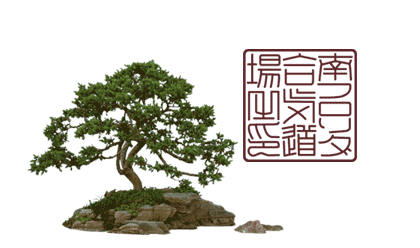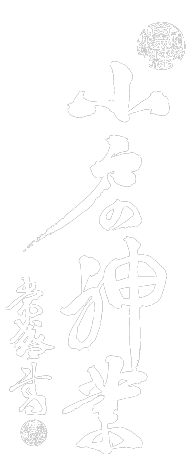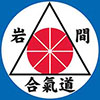


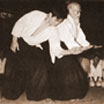
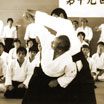
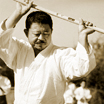
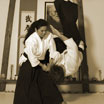

A brief introduction to Aikido
Aikido was founded by Morihei Ueshiba, (December 14, 1883- April 26, 1969) in Western Japan, and is considered one of the world's foremost martial artists. After training classical styles of Enjin Shin Yo-Ryu Jujutsu, Goto-Ha YagyuShingan-Ryu, Daito-Ryu Jujutsu, and being a devout follower of the Omoto Kyo Religion, of whom received an exceptional level of spiritual awareness; he created Aikido, the art which maximizes self-defense with minimal force.
Aikido is a synthesis of O'Sensei's martial studies, philosophy, and religious beliefs. Aikido is often translated as "the Way of unifying life energy", or as "the Way of harmonious spirit." Ueshiba's goal was to create an art that practitioners could use to defend themselves while simultaneously protecting their attacker from injury. Ueshiba envisioned aikido not only as the synthesis of his martial training, but also an expression of his personal philosophy of universal peace and reconciliation, an art which holds the concept of non-conflict, rather than the defeat of an adversary, as the ideal.
The goal of Aikido is to blend and redirect the momentum of your opponent in order to neutralize the attack, regardless of the size of the assailant. The essence of Aikido is the unbalancing of your partner which is achieved through the precise use of leverage, inertia, gravity, centrifugal and centripetal forces which ultimately defuses and counters the energy of an attack. The techniques themselves are not dependent on strength or agility in order to be effective, which makes this art conducive for men and women of all ages.
Aikido is not only taijutsu (open hand techniques), but is complimented with the art of Aiki-ken (wooden sword) and Aiki-jo (wooden staff). In practicing with the ken and jo, it clarifies aspects of Aikido that are often more difficult to perceive while practicing taijutsu. Buki waza (weapons techniques) emphasizes the principles of extension, centering and focus. The founder developed much of the empty handed aikido techniques from traditional sword movements, so the practice of these movements provide insight into the origin of techniques and movements, as well as vital practice of these basic building blocks.
Aikido training is mental as well as physical, emphasizing the ability to ultimately relax the mind and body under the pressure of confrontational circumstances. This is necessary to enable the practitioner to perform the bold enter-and-blend movements that underlie aikido techniques, wherein an attack is met with confidence and directness. Morihei Ueshiba once remarked that one "must be willing to receive 99% of an opponent's attack and stare death in the face" in order to execute techniques without hesitation. Aikido's focus is not only based on training for fighting proficiency, but also with the betterment of daily life, this mental aspect is of key importance to aikido practitioners.
Roles of uke and tori/nage
Aikido training is based primarily on two partners practicing pre-arranged forms rather than freestyle practice. The basic pattern is for the receiver of the technique, uke, to initiate an attack against the person who applies the technique— tori or shite, also referred to as nage (when applying a throwing technique), who neutralizes this attack with an aikido technique.
Both halves of the technique, that of uke and that of nage, are considered essential to aikido training. Both are studying aikido principles of blending and adaptation. Nage learns to blend with and control attacking energy, while uke learns to become calm and flexible in the disadvantageous, off-balance positions in which nage places them. This "receiving" of the technique is called ukemi. Uke continuously seeks to regain balance and cover vulnerabilities, while nage uses position and timing to keep uke off-balance and vulnerable. In more advanced training, uke will sometimes apply reversal techniques, kaeshi-waza, to regain balance and pin or throw nage.
Ukemi refers to the act of receiving a technique. Good ukemi involves attention to the technique, the partner and the immediate environment - it is an active rather than a passive receiving of Aikido. The fall itself is part of Aikido, and is a way for the practitioner to receive, safely, what would otherwise be a devastating strike or throw and return to a vertical position in one fluid movement.
